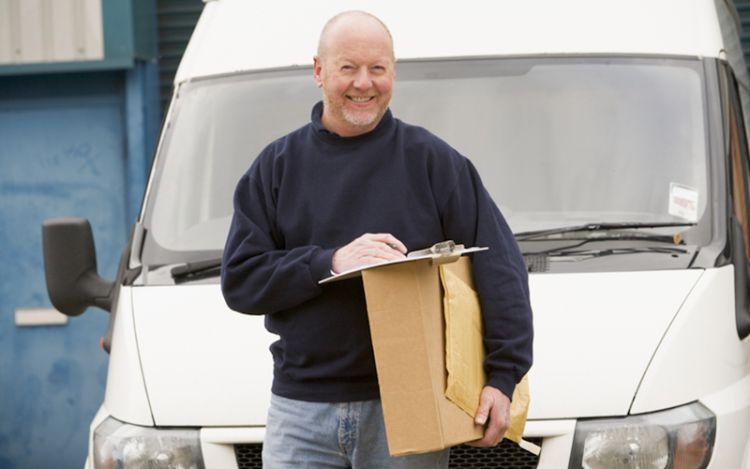Discover effective strategies to optimize last-mile delivery, reduce costs, and enhance efficiency without compromising service quality.

Last-mile delivery is a critical component of today's e-commerce scene, accounting for up to 53% of the logistics costs. The demand for fast deliveries continues to rise, forcing companies to find effective strategies to manage and reduce these expenses while maintaining service quality. Here are some valuable strategies to help reduce last-mile delivery costs without compromising service quality.
1. Plan and optimize your routes
Efficient route planning reduces fuel costs and travel time and improves driver productivity. By planning the most efficient routes, companies can minimize the distance traveled and ensure timely deliveries in their last-mile logistics. Levering technology such as advanced GPS, logistics intelligence systems, and routing software is increasingly essential, as these technologies help identify the shortest and fastest routes, avoid traffic congestion, and adjust in real time to changing conditions in final mile delivery.
2. Diversify delivery options
Different delivery options, such as same-day delivery, scheduled delivery, and pickup points, can reduce failed delivery attempts and improve efficiency. Customers can choose the most convenient option, leading to higher satisfaction with last-mile delivery. Diversification optimizes delivery schedules and routes, reducing operational costs and better managing peak times. By distributing the delivery load more evenly throughout the day, ultimately, you will reduce last-mile delivery costs.
3. Implement tracking and auto-dispatch technologies
Real-time monitoring increases transparency and reduces delivery failures, lowering costs associated with re-deliveries and lost packages. Customers can track their orders, which enhances their overall experience with last-mile logistics. Automating the dispatch process improves resource allocation and delivery efficiency, as it ensures that deliveries are assigned to the nearest and most suitable delivery personnel, reducing delays and operational costs in the final mile delivery process.
4. Improve your verification and delivery management
Implement delivery confirmations through QR codes, photos, or digital signatures to minimize disputes and return costs. It ensures that the correct package reaches the right customer, minimizing errors in last-mile delivery. Efficient reverse logistics improves customer satisfaction and lowers return expenses. By simplifying your returns process, you will ensure that items are returned quickly and processed efficiently, reducing last-mile delivery costs.
5. Decentralization and strategic warehousing
Implementing smaller warehouses closer to urban centers (Forward Stocking Locations) can significantly reduce transportation costs, as proximity to customers allows quicker and cheaper deliveries. Moreover, strategically located micro-warehouses speed up deliveries and cut costs. Click-and-collect centers offer convenient pickup options for customers, reducing the need for home deliveries.
6. Collaborate and subcontract
Sharing vehicles and resources among companies can significantly reduce operational costs. Collaborative logistics allows multiple companies to utilize the same delivery infrastructure, optimizing efficiency in last-mile logistics. Additionally, you can hire third-party delivery services to offer flexibility and reduce your fixed costs. Outsourcing can be particularly beneficial during peak times, providing additional capacity without needing permanent resource investment for last-mile delivery.
7. Greater sustainability and operational efficiency
An intelligent strategy can be optimizing packaging to reduce shipping costs in last-mile delivery and increase vehicle load capacity. Smaller, lighter packages mean more items can be delivered in one trip, lowering overall transportation costs. You can also adopt more sustainable vehicles to meet environmental regulations and reduce long-term costs. Electric and low-emission vehicles often have lower operating costs and can access urban areas with stricter emission regulations, contributing to cost-effective last-mile logistics. Lastly, strategic partnerships with reliable partners should be established to improve efficiency and reduce errors and costs. This will ensure that every part of your delivery process, from warehousing to final delivery, is handled efficiently.
8. Pay attention to future trends
As for the future, emerging trends in last-mile delivery point to deliveries being made by drones, autonomous vehicles, and smart lockers. It is, therefore, crucial to stay ahead of these trends to remain competitive and efficient in last-mile logistics.
Adopting these strategies can improve operational efficiency and significantly reduce last-mile delivery costs. They can also be an effective tool for improving customer satisfaction and sustainable growth in the e-commerce sector.
Frotcom’s comprehensive features can help you optimize your last-mile delivery process and reduce costs. To know more, contact a member of our team.
- Frotcom
- Last-mile delivery
- Last-mile logistics
- Last-mile delivery costs
- Logistics costs
- Cost reduction strategies
- Logistics efficiency
- E-commerce logistics
- Route Optimization
- Tracking technology
- Sustainable Logistics
- Delivery management
- Drone deliveries
- Autonomous vehicles
- Smart lockers
- Supply chain optimization

